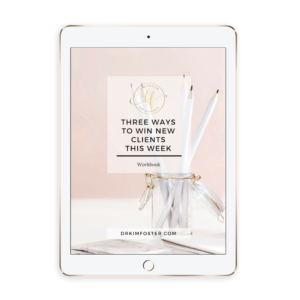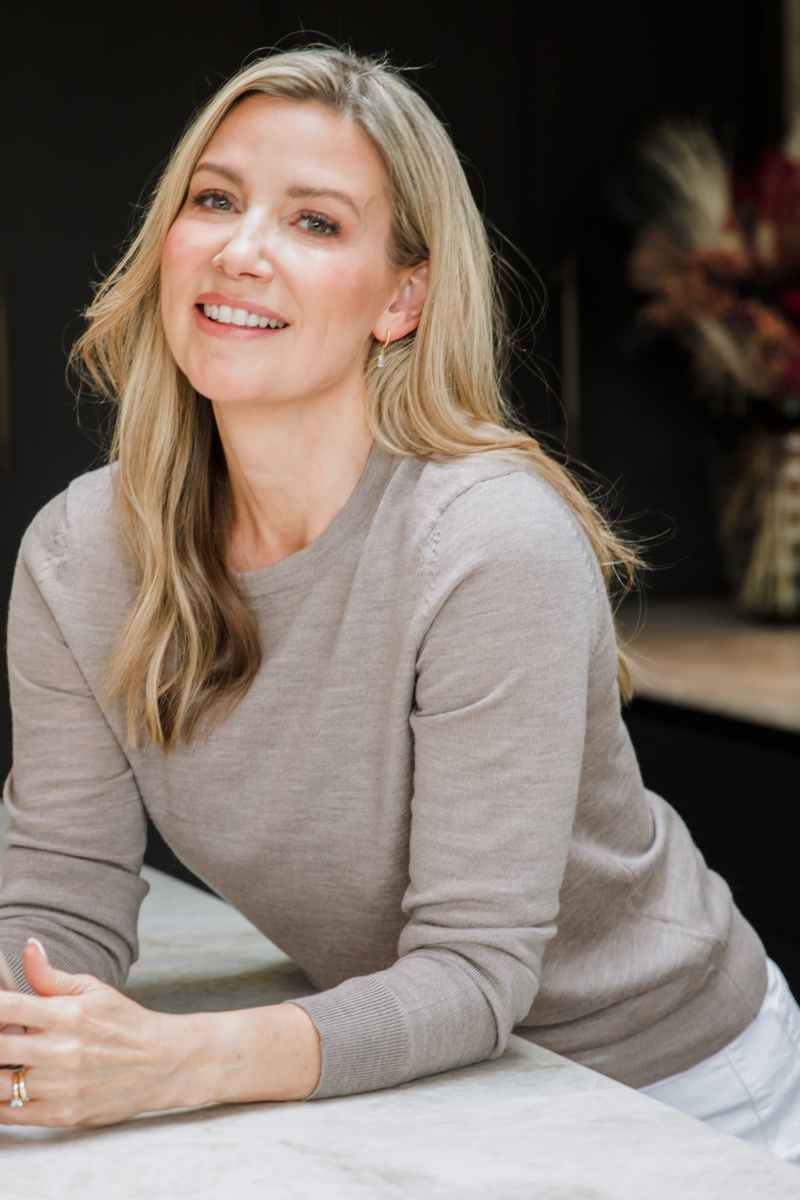
I often hear women talk about feeling overwhelmed, and I totally get it. There are a million things going on at all times, and there are always so many things to do. We have a culture of “crazy busy”.
But when I talk to people about how to not be overwhelmed, I’m usually met with a helpless shrug and something along the lines of “there’s nothing I can do about it, there are just a lot of things going on”.
However, I’m not necessarily talking about changing your outside circumstances. The core of this, for me, is managing your MIND to beat overwhelm.
And that’s what this week’s podcast episode is all about.
Here are some of the things I’ll be sharing:
- My 6-step process to stop feelings overwhelmed
- How to separate facts from stories
- How to become unavailable for overwhelm
- How to make decisions and move forward
- How to schedule your priorities and calendar all your tasks
By the way, if you’d prefer to listen to this topic than read it…you can do that right here:
As entrepreneurs, as coaches, we really can’t afford to spin out into overwhelm. There are just too many things to do, to stay on top of, and overwhelm besides being very uncomfortable, is also very unproductive.
So if you’re building a business — and I suspect you are — then it is an investment in your own business to keep your mindset in a healthy, calm place…and out of overwhelm.
So let’s talk about how to do just that.
Personally, I have been in extremely busy seasons of life, with a lot of things going on, a lot of moving parts, and it would have been very easy to go into overwhelm at times like that.
But I work very hard to manage my mind so I don’t feel overwhelmed.
And those are the 6 steps I’m going to walk you through today.
But the key of it all is to focus on FACTS and STORIES.
This is something I’ve learned from a couple of different key mentors of mine in the personal development world. And it’s one of the greatest lessons if you apply it to your life.
There are the things that happen—the facts— and then there are the thoughts you choose to have about them—the STORIES.
And the truth is, overwhelm doesn’t have to be a part of your life. When you really take a hard look at it, overwhelm is just a story. It’s not a fact.
But before I get into the nuts and bolts of the 6 steps, let’s make sure we’re on the same page about what I’m talking about.
WHAT IS OVERWHELM?
When I say overwhelm, I’m talking about spinning into feelings of…
- I’m so busy
- It’s just too much
- I’m so overwhelmed
- I can’t handle that
- I’m so tired
- There’s too much going on
And all these statements are definitely colored with self pity and a sort of wallowing in “woe is me”.
Now, I have definitely been known to wallow in self-pity — much more so in the past, but it still creeps in now and then, so I know what this is all about, and I have worked hard to pull myself out of that vortex of self-pity when I feel it happening. It’s interesting, the chances are much higher that I’ll go into this lamenting state of mind when it’s late in the day, close to bedtime…I call it sundowning, and my husband will attest to this to, that this is NOT a good time for me, in general, and really the best thing to do at this point is to get to bed, get some rest, and then look at things with fresh eyes.
But the truth is, overwhelm is an indulgent emotion. Feeling overwhelmed is not caused by your circumstances. It’s caused by the thoughts you’re having, and what’s going on in your mind.
So that’s the key. Managing your mind to beat the feeling of overwhelm…no matter what’s going on in your life.
And here’s my 6-step process to stop those feelings of overwhelm. Now some of these steps are designed to PREVENT you from getting anywhere near overwhelm…and some of them are what to do when you start to feel overwhelm actually creeping in.
STEP 1: Make the decision that you are no longer available to indulge in overwhelm.
This is step one. And I know this sounds so simple it’s ridiculous, and can’t possibly work, but just stay with me.
Deciding that you’re no longer available to indulge in overwhelm is something that I learned from one of my mentors. See, there are emotions that serve you, and emotions that don’t serve you. This is something I teach my clients, when we’re working on a particularly thorny mindset issue.
And since it’s your thoughts that create your emotions, and you are actually in charge of your thoughts, you can choose thoughts that only produce emotions that serve you, or useful emotions.
And of course, the truth is, overwhelm is an emotion, a negative emotion that does not serve you. Not all negative emotions are non-useful. Sadness, for example—that’s a negative emotion but it does have a purpose, in the right setting, it can be useful.
The loss of a pet, for example, of course sadness is an expected emotion, and it’s part of the grieving process, so we don’t need to strive to eliminate all negative emotions…but overwhelm is an emotion that does not serve us in any way.
In fact, staying in overwhelm keeps you stuck.
When something unexpected happens, you need to recognize the feeling of overwhelm as it begins to creep in, and to decide you are not available for that emotion.
STEP 2: Simplify by by using the structure of constraints.
Here’s one problem that leads to overwhelm: too many options. We live in a time when we have so many decisions to make every day…and that can very easily lead to the feeling of overwhelm.
It isn’t a bad thing; we just need to train our brains to deal with it. And what that comes down to is discipline and constraint.
I’m sure you’ve heard about decision fatigue. That our brains just go on shut-down when we reach a certain number of decisions in a day.
And this would definitely lead to a feeling of overwhelm. So we need to prevent that from happening by limiting the number of decisions.
A simple example of one way I do this is with grocery shopping. Listen, I love grocery stores — when I’m in a relaxed mood and I have plenty of time –but let’s face it, there are just way too many choices in our grocery stores these days. So I keep things simple and kind of regimented for myself, by doing my grocery shopping online, and I have my saved weekly grocery list, and I basically just order the same groceries each week. This way, I streamline the process, I keep my decision-making to a minimum, and I just take care of the basics by planning ahead of time.
Anywhere you can put rules in your life that help you limit your options, you’re actually doing yourself a favor by avoiding the overwhelm.
STEP 3: Make decisions and move forward.
Analysis paralysis is another form of overwhelm. Going into shutdown because you think you need to gather more facts and to “think about things”. But clarity does not come from more sitting around and thinking about stuff. It really comes from doing things, from making decisions, and getting on with it. Then things become more clear. Now, I’m all about working things out in my mind — to a point. I love journaling, I’m a big-time journaler, daily in fact…but there comes a point when there’s only so much I can think about and work out in my head. I always followup my thoughts and pondering and self-exploration with a whole lotta action.
But there’s an important thing about decisions — deciding how you feel about your decision.
This one is huge. I tell my clients this all the time. The most important decision you make is not the first decision, it’s the second one. And the second decision is deciding how you’re going to feel about your first decision.
So many times, we make a decision and then we doubt ourselves. We live in this state of regret. I’ve decided this, but maybe I shouldn’t have done it.
And then you’ve got a split energy about it.
You made a decision but you can’t even go all in, because part of you is holding back, saying “maybe I shouldn’t have done it”
I’ve done this one myself, for sure, and ALWAYS it doesn’t end well.
An example: my husband has a terrible time deciding from the menu at restaurants. And I used to be the same. I would order something and then regret my choice…which meant I wouldn’t even enjoy my food!
I finally just got fed up with it. I thought: when I decide something from now on, I’m going to decide to feel good about it. I’m going to go all in on my decision and get all my energy behind me, pushing me toward whatever it is that I chose.
And it’s so much more fun to live this way. You just decide, and then you decide to feel amazing about it. It really is that simple. You stop fighting with your decisions. And to me, that’s powerful, and a graceful way to live.
It is not effective to make a decision and then spend the next weeks or years doubting that decision. Move on. Decide that was a good decision for you in that moment and keep making decisions and keep deciding how you’re going to feel about them.
So to help keep you out of overwhelm, make a decision, take action, and decide to feel good about the decision you made.
If you stay spinning in indecision, overwhelm won’t be far off.
STEP 4: Schedule your priorities first
It’s important to be very clear on what YOUR priorities are, and to put those priorities on the calendar before you make time for other people’s priorities. By this, I meant things that you’ve been invited to do, asked to do…really anything that represents somebody else’s agenda.
Now, I know this can be a very tough thing, especially for people in the helping professions, for people in wellness—like you are, most likely, and if you’re a heart-centred person who wants to help other people.
I get that, totally. I have been that person, too.
But…you really need to discern the difference between helping others….and being a people-pleaser. There is a difference.
And making the conscious choice of scheduling your own priorities before other people’s, means you’re being proactive, not reactive. It means you are maintaining elegant control of your schedule…not just running around doing things for others and putting yourself last.
It will require that you’ll have to say no to other people.
I’m not saying it’s easy…but it is the right thing to do.
Personally, I am extremely protective of my calendar.
I have a very good friend who is terrible at this. If someone asks her to do something, she immediately says yes. She is a single mom, has two young kids, has a very complicated schedule … but whenever someone asks her to do something, she’s the first to volunteer. Need more drivers for a school field trip? She says yes. Need stuff for the bake sale? She’s the first one to sign up. It’s no surprise to me that she’s always tired, always stressed, never has time to properly take care of herself.
So don’t be that way. If you want to avoid becoming overwhelmed, keep a firm grasp on your priorities and your schedule.
Quite frankly, if your schedule is unmanageable, it means you need to cut things out.
Okay, and while we’re talking about your schedule, that brings us to step number 5, which is…
STEP 5: Chunk everything down into action items, and put them on your calendar.
This is all about breaking big projects into bite-sized tasks. That’s because a sure recipe for overwhelm is not getting things done…when you really need to get things done.
This is a skill I’ve honed over time, chunking tasks down. I used to just have huge projects on my to-do list…and then they wouldn’t get done. The reason is because I just didn’t know where to start.
I think I really nailed this skill though when I was writing novels. Because, obviously, writing a novel is a huge, monster of a task. And if you just stand there at the bottom of the mountain staring up at it wondering how you’re going to get to the top, you’re never going to take that first step. What helped me in this approach was a book called Bird by Bird by Anne Lamott. It’s a bible in writing circles, and for good reason. But one of the basic premises, is the story that gives the book its title. Lamott tells the story of her brother, when they were kids, being completely overwhelmed by a homework project about birds. It just felt huge and he was having a meltdown. And so their dad sat down with him and said, Okay buddy, let’s just take this bird by bird.
I use this story in my own household when my kids are getting overwhelmed by a big homework project, or other monster task they have to do, like cleaning their rooms…and now the phrase “bird by bird” is just a shorthand in our family for chunking things down and doing it one small step at a time.
So this is what you need to do, too. Chunk each thing down into ridiculously small bite-sized pieces and then distribute those pieces across your calendar.
Even something that seems it’s a single job, like: “write sales page” for a new program I’m launching. Seems like just a single thing, right?
But what I do is break it down into pieces that look something like:
- write first draft of the copy of sales page
- revise draft
- polish draft
- source images for page
- choose font for page
- choose color scheme
- format sales page—first pass
- revise formatted page
- connect buy now buttons to sales cart
- set countdown timers
- check all links
Even those design elements I listed in the middle there. I could have written a task that was something like: “choose design elements for page” but even that is too big, in my mind. What’s better is to write “choose fonts”, “choose colours”, “choose images”, and so on.
A sure sign that you haven’t chunked things down enough is when you don’t get started on something. If you haven’t created the very smallest, atomic level first step for yourself, it’s likely that action item is going to languish on your to-do list….which, of course, is going to lead straight to that feeling of being overwhelmed.
Okay, we’re on to the very final step, step #6, which actually circles back to something I was talking about at the very beginning, and it’s to…
STEP 6: Separate facts from stories
This final step really comes into play when you’re about to spin into overwhelm. Everything else I’ve mentioned up to now is to help you stay organized so you don’t get anywhere near overwhelm, but more than likely, you’ll end up heading toward overwhelm at some point. And so this is how to stop from completely spinning out.
You have to be able to give yourself that separation, to really be able to step outside yourself and see your thoughts for what they are — just stories you’re telling yourself.
Now I’m not saying this is easy.
But it is a skill you can learn and hone with practice.
It’s a matter of asking yourself: “is this true?” And “What are the facts here?” And also “What am I thinking about this situation?”
For example, a while ago, I guess I was kind of near the beginning of my journey as a coach, so I wasn’t super experienced yet, and I only had a couple of clients. But I had a private coaching session booked with one of my clients, and I had juggled a couple of things to make this particular session happen, because I was out of town with my family, so we were staying in a hotel, but I’d made some arrangements to use the business lounge…and then I woke up feeling dreadful, with the beginnings of the flu, but I was determined to push through, mostly because I had worked hard to make the arrangements to make this work, and I very, very rarely cancel client appointments, if ever…and then for whatever reason the wifi in the business lounge was kind of iffy as I was testing it…and I could feel myself starting to spin into overwhelm and frustration…and I stopped myself.
And I heard my thoughts, they were definitely of the self-pity variety “why is everything so hard?” And “this kind of thing always happens to me!”…so I separated myself from the drama, and asked myself “is that true? Are things ALWAYS hard for me?” And I realized the answer was no, of course not. Many times things work out just fine. And sometimes things go wrong. And that’s just life. And I had a very simple choice. I could push on and continue to find solutions to this, or I could choose a different way, and just contact my client, reschedule the appointment, and voila, that’s what I did, and it worked out completely fine. I could have easily pushed on and made it work, and that might have been fine, too, but the key thing here is I didn’t let myself get too far into that vortex of overwhelm because that would have just been indulging in that drama, and not actually making a choice. So I cleared my head, dropped the drama, and instead just made a choice and kept moving forward.
It’s important to always recognize that you can choose your thoughts. If you’re choosing thoughts that aren’t supportive, you’re going to feel overwhelmed. You have to manage your words. Saying things like “I’m overwhelmed” or “I’m crazy busy” just creates that drama.
The more you practice eliminating overwhelm from your life, the easier it is.
Remember: your thoughts create your feelings. If you’re feeling overwhelmed, it’s because you’re choosing thoughts that are causing that overwhelm.
And always know that there is another way.
RECAP:
Okay, there you have it, my 6-step process to help you stop feeling overwhelmed. I hope you enjoyed this topic, and I would love for you to just start by observing your thoughts and the words you’re saying. Are you running around saying things like “I’m so busy” and “I’m completely overwhelmed” and just start noticing that. That’s the best place to start.
Before I sign off, I just want to give a shout-out to my podcast coach who helped me get this show off the ground. Mary Chan, who is super talented, and really helped me chunk down this podcast project into manageable bite-sized pieces, and I really couldn’t have tackled it without her help. So if you’re thinking about starting your own podcast, I definitely recommend checking out Mary. Here is where you can find her.
Okay, well that’s all for today, have an amazing day and I’ll talk to you again soon.
Resources:
3 Ways To Win New Clients This Week

Ready to plan your next steps in your wellness business? LET’S HOP ON A CONSULTATION CALL! LEARN MORE HERE
Subscribe Links:





